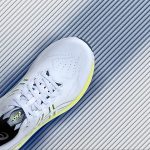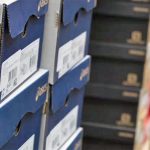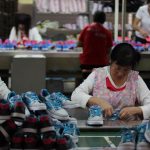Gildan Activewear Inc. reported second quarter net earnings of $41.7 million and diluted EPS of 34 cents, compared to net earnings of $21.1 million and diluted EPS of 17 cents in the second quarter of fiscal 2007.
The company did not achieve its previous guidance for the second quarter of approximately 42 cents adjusted diluted EPS, which it had provided on January 30, 2008, as a result of the retail integration issues combined with lower than projected unit sales growth in activewear resulting from a shortfall in production for the Dominican Republic textile facility, partially offset by more favourable activewear product-mix and lower than anticipated promotional discounts in the U.S. wholesale distributor channel.
Sales in the second quarter amounted to $293.8 million, up 26.5% from $232.1 million in the second quarter of last year. The increase in sales revenues was due to an increase of 98.4% in sock sales due to the acquisition of Prewett and new retail sock programs obtained in fiscal 2007, a 7.5% increase in unit volumes for activewear, an approximate 3% increase in activewear unit selling prices and a more favourable activewear product-mix. Growth in activewear unit volumes was constrained by lower than anticipated production, including delays in the introduction of new high-value ring-spun T-shirt and sport shirt products at the company's textile facility in the Dominican Republic. The increase in sock sales was net of the impact of exiting unprofitable sock product-lines which did not fit with Gildan's strategy to focus primarily on high-volume basic sock programs in the U.S. mass retail channel. In addition, average selling prices for socks were reduced, as selling prices for new sock programs were based on the projected cost structure of Gildan's new sock facility in Honduras, which is currently being ramped up to full capacity.
Unit shipments of activewear to Europe increased by 1.1% during the quarter. The slower growth in shipments to Europe in the quarter was also due to the shortfall in production and delay in new product introductions as a result of the issues in the Dominican Republic textile facility.
Gross margins in the second quarter of fiscal 2008 were 33.9%, the same as in the second quarter of fiscal 2007. Gross margins in the second quarter compared to last year were positively impacted by higher activewear selling prices and lower promotional discounts, a higher-valued activewear product-mix and increased manufacturing efficiencies from the company's manufacturing operations in Central America. These positive factors were offset by a higher proportion of sock sales, which currently generate lower gross margins than activewear, production inefficiencies in the Dominican Republic facility, higher energy costs, the impact of inventory write-downs in order to accelerate the liquidation of sock product-lines which have been discontinued, and additional costs incurred to service mass-market retailers during the integration of the company's retail information systems.
Selling, general and administrative expenses were $36.6 million, or 12.5% of sales, compared to $28.5 million, or 12.3% of sales in the second quarter of fiscal 2007. The increase in selling, general and administrative expenses is due to the acquisition of Prewett, higher distribution expenses, increased expenditures for the development of information systems, and the impact of the stronger Canadian dollar on corporate administrative costs. The increase of $5.6 million in depreciation and amortization costs was due to the company's continued investments in new capacity expansion, and the impact of the Prewett acquisition.
Interest expense in the second quarter increased by $1.0 million compared to the second quarter of last year, due to the increased utilization of the company's revolving long-term credit facility to fund the acquisition of Prewett on October 15, 2007, partially offset by the impact of lower interest rates.
The company's effective income tax rate for the second quarter was approximately 7.7%, compared to 5.0% in the second quarter of last year, excluding the impact of restructuring and other charges. The increase in the effective income tax rate was primarily due to the higher tax rate attributable to the company's U.S. sock business, which is currently taxed at higher effective income tax rates.
Outlook
On April 29, 2008, the company lowered its adjusted diluted EPS guidance for the full year to a range of $1.45 to $1.50, up 12% to 16% from adjusted net earnings of $1.29 per share in fiscal 2007. The company had previously projected adjusted diluted EPS of $1.85 to $1.90 for the fiscal year, up 42% to 47% from last year.
The decrease in projected EPS compared to the company's earlier guidance is primarily due to the production issues at the Dominican Republic facility, which will result in lower than anticipated unit sales growth in the second half of the fiscal year, together with higher than projected manufacturing costs and supply chain inefficiencies. In addition, the company expects to be negatively impacted by higher than projected increases in transportation and energy costs in the second half of the fiscal year. These factors, together with the impact of the retail integration issues which caused the shortfall in EPS in the second fiscal quarter, are expected to be partially moderated by the impact of assumed more favourable selling prices in the U.S. screenprint channel, as a result of a recently announced selling price increase.
The projected increase in adjusted diluted EPS of 12% to 16% compared to last year is primarily due to 11% projected unit sales growth in activewear and underwear, compared with our previous projection of 14% unit sales growth, and higher selling prices for activewear in the screenprint channel. The company continues to assume that the positive impact of these factors will be partially offset by higher selling, general and administrative expenses, higher depreciation and interest expenses, increases in cotton, energy and transportation costs, and a higher effective income tax rate including the non-recurrence of income tax recoveries which were recorded in fiscal 2007.
The company expects EPS for the third fiscal quarter to be slightly reduced from adjusted EPS of 47 cents per share in the third quarter of fiscal 2007. The impact of the lower sales volumes and higher operating costs resulting from the Dominican Republic issues will be primarily reflected in the third quarter. The company will be in a better position to service demand in the wholesale distributor channel in the fourth quarter. The company also noted that its ability to support growth in demand for fleece is not expected to be constrained by the lower production from the Dominican Republic facility, as fleece requirements are being produced at the company's new facility in Honduras, which has been ramped up successfully and is meeting or exceeding the company's objectives for production and manufacturing efficiencies.
New Capacity Expansion Projects
The company is confident that its production issues in the Dominican Republic will be fully resolved in the second half of fiscal 2008, and that these issues will not impact its ability to support its unit sales growth in fiscal 2009. With the company's projected product-mix, Gildan expects to be able to produce in excess of 50 million dozens of activewear and underwear in fiscal 2009 in its vertically-integrated manufacturing facilities. However, new capacity will be required in order to be able to meet projected sales demand for the company's products in fiscal 2010. The company is therefore announcing its intention to construct a third large-scale, vertically-integrated textile facility in Honduras, where Gildan can leverage its existing infrastructure and manufacturing management resources. The capital cost of the new facility, which will be constructed in fiscal 2008 and fiscal 2009, is expected to be in the range of $100 million to $110 million, the majority of which will be incurred in fiscal 2009.
In addition, the company has also announced its intention to construct a new distribution centre in Honduras. In addition to supporting the company's continuing sales growth, the new distribution facility in Honduras will permit direct shipments to both U.S. and international customers, where appropriate, as well as provide a lower cost structure to handle labour-intensive activities for mass-market retail customers.















